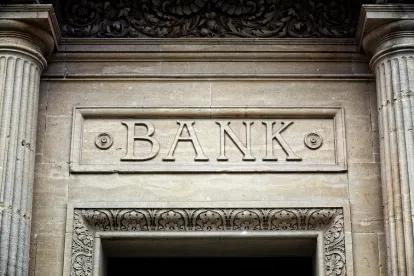As the COVID-19 situation continues to evolve, market volatility, workplace disruptions and a shuttering of everyday life are becoming increasingly commonplace. While the 2021 LIBOR phase-out may not seem top of mind during the current crisis, speculation is mounting about whether the pandemic will delay or otherwise alter the phasing out of the “world’s most important number.”
As a refresher, the LIBOR transition was fueled by a lack of transparency in pricing this key index. Per the Loan Syndications and Trading Association, $200 trillion of LIBOR-based contracts were derived from less than $1 billion of daily LIBOR trading, leaving the benchmark subject to manipulation and fraud.
On July 27, 2017, Andrew Bailey, the chief executive of the United Kingdom’s Financial Conduct Authority (FCA), announced that after 2021, the FCA would neither encourage LIBOR panel banks to provide quotes nor exercise its power to compel them to do so. This development began to spur the adoption of the Secured Overnight Financing Rate (SOFR) in U.S. debt instruments as an alternative benchmark rate, with major financial institutions devoting large internal teams to manage the transition from LIBOR to SOFR. In the past few months, regulators from the Office of the Comptroller of the Currency to the New York Department of Financial Services have emphasized their intention to monitor the LIBOR transition progress of financial institutions. As of the date of this alert, no regulator has made any public declarations adjusting the timing of the proposed LIBOR phase-out. During this period in which the world may expect a contraction or a recession, any legislation at a federal or state level (for example, the recent proposed legislation by the Alternative Rates Reference Committee (ARRC) at the New York state level) may be delayed until the economic situation stabilizes. In parallel, consultations being conducted by the ARRC about spread adjustment methodologies and by ISDA about pre-cessation triggers to the permanent cessation fallbacks to LIBOR may be further delayed or extended.
Further, during the pandemic, financial markets will scrutinize the impact to SOFR during economic distress, and consequently its volatility and soundness as an alternative rate. SOFR, as a collection of daily rates, is currently quoted as a backwards-looking rate, while LIBOR is a forward-looking benchmark. LIBOR reflects a bank’s cost of funds and is derived from its creditworthiness, whereas SOFR is calculated based on the value of the U.S. Treasury bonds posted by a financial institution as collateral. With daily U.S. treasury yield curve rates close to zero, the published SOFR index went from 1.10% on March 13 to 0.26% on March 16 and 0.54% on March 17, arguably doing very little to squelch concerns with regards to its volatility in turbulent market conditions – concerns that are particularly acute in the derivatives market. For example, a backtrack calculation indicates that during the 2008 Crisis, the difference between LIBOR and SOFR averaged 36 bps and spiked to over 460 bps. See Thomson Reuters, Federal Reserve Bank of New York, Oliver Wyman analysis.
While a market for SOFR-indexed products continues to develop, and trading of SOFR-denominated derivative products grow over time, market participants expect that a forward-looking SOFR rate will be developed during 2021, although there is no certainty that this will happen. In the absence of a forward-looking SOFR rate, the SOFR 30-day average (backwards-looking) was officially quoted on March 18 at 1.32%, with the SOFR 90-day average at 1.47% and the SOFR 180-day average at 1.60%; meanwhile, USD LIBOR was quoted on March 17 at 0.75% (1-month), 1.05% (3-month) and 0.91% (6-month). With these rates being so close – at least for the moment – it will be interesting to see whether these relatively small differences among these two rates continue during this current market turbulence. If so, it may facilitate an orderly transition away from LIBOR and provide some comfort with respect to the calculation of margin adjustments in a scenario where the rates would remain relatively similar.
The coming months will be instructive for the markets, as more data is collected on SOFR during a chaotic market period, and as we hurtle towards the 2021 LIBOR phase-out deadline.







 />i
/>i
